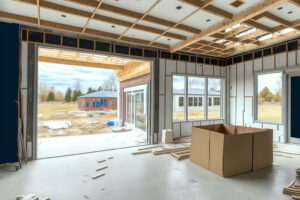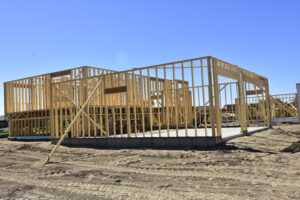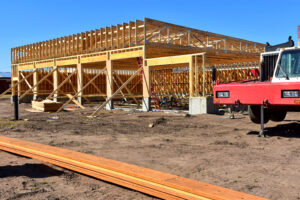The thriving world of commerce is founded on a foundation of physical structures as well as commercial concepts. This is where commercial construction comes in, as it is a broad and complicated industry dedicated to planning, designing, and constructing buildings for a variety of corporate objectives. The commercial building defines the surroundings in which businesses function and consumers interact, ranging from high skyscrapers that house corporate headquarters to enormous warehouses that store and deliver commodities. This industry includes a wide variety of projects, each with its own set of requirements and obstacles. This article explores the complexities of commercial buildings to provide insight into the foundation of our business environment.
Its Characteristics
- Scale and Scope
Commercial building spans a wide variety of projects, from modest to massive. Small-scale projects, such as restoring a restaurant or redesigning an office layout, need a concentrated team and a shorter period. On the other hand, large-scale projects call for the construction of complete structures from the ground up, like shopping malls or skyscrapers. They often require a large number of skilled contractors, and careful planning, and might take years to complete.

Commercial construction builders build banks
- Compliance with Authorities
Regulatory compliance in commercial construction is adhering to government-issued laws, regulations, and standards to ensure safety, environmental protection, and quality. This includes obtaining necessary approvals, following building requirements, and implementing safe measures. Failure to follow the established guidelines might result in legal consequences, project delays, and higher expenses in the long run. As a result, regulatory compliance is vital to the successful and lawful completion of commercial building projects.
- Project Management
Effective project management is critical because of the complexity and size of commercial building projects. It entails organizing a variety of responsibilities, including planning, budgeting, scheduling, and construction oversight, to guarantee that the project is finished on time and under budget. It necessitates clear communication, management of risks, and adherence to safety guidelines. Key components include resource management, alignment with stakeholder goals, and maintaining quality standards while negotiating the challenges of large-scale commercial projects.
- Integration of Technologies
Technological integration in commercial buildings has transformed the sector by increasing efficiency and precision. Building Information Modeling (BIM), drones, and 3D printing are examples of innovations that simplify project administration, enhance design accuracy, and save costs. Advanced software enables real-time cooperation among stakeholders, resulting in smooth communication and rapid decision-making. These technologies not only increase production but also encourage sustainability by improving resource utilization and reducing waste.
Challenges of Commercial Construction
Commercial building projects are complicated undertakings that might face a variety of problems. Keeping costs under control is one of the most difficult challenges project managers encounter. Material costs might fluctuate owing to global market factors, and unanticipated site features such as unstable soil or buried utilities can compel design revisions that increase costs. Prior to breaking ground, commercial building projects must navigate a maze of rules. Building laws govern everything from structural integrity to accessibility, while environmental standards guarantee that there is little impact on the environment. Layers of permissions, ranging from zoning to stormwater management, require clearance from many agencies. Navigating these challenges can be time-consuming and costly, necessitating the skills of architects, engineers, and legal teams to guarantee the project meets all relevant safety, environmental, and zoning regulations.
Tight deadlines are another major impediment to commercial projects. Unexpected occurrences like adverse weather or supply chain interruptions can cause delays. Even slight setbacks can have a long-term impact on the project timeline. Furthermore, maintaining quality control necessitates consistent monitoring. Communication breakdowns among multiple stakeholders can also result in misunderstandings and errors during construction, demanding rework and risking the project’s ultimate completion. These problems highlight the significance of precise planning, clear communication, and agility while negotiating the complexity of commercial construction.
Reasons to Hire Experts
Commercial construction projects are complex establishments that need a distinct set of skills and expertise beyond fundamental building techniques. Hiring specialists in this industry has several advantages. Their knowledge translates into a thorough understanding of complicated construction laws and regulations, ensuring that your project meets safety requirements and avoids costly delays due to noncompliance. Furthermore, commercial construction specialists have a vast network of skilled subcontractors and vendors that can supply high-quality materials and artisanship at cheap prices. Most importantly, their knowledge enables precise planning and budget management, reducing unanticipated complications and keeping your project on track for a timely and cost-effective conclusion.
Business architecture shapes the commercial landscape with which we interact every day. These initiatives, which range from the retail outlets we visit regularly to the offices where we work, play an important role in promoting economic activity and community development. Understanding the complexities involved, from planning and design to construction and management, gives us a better respect for the complex world that creates the places that meet our business demands.




